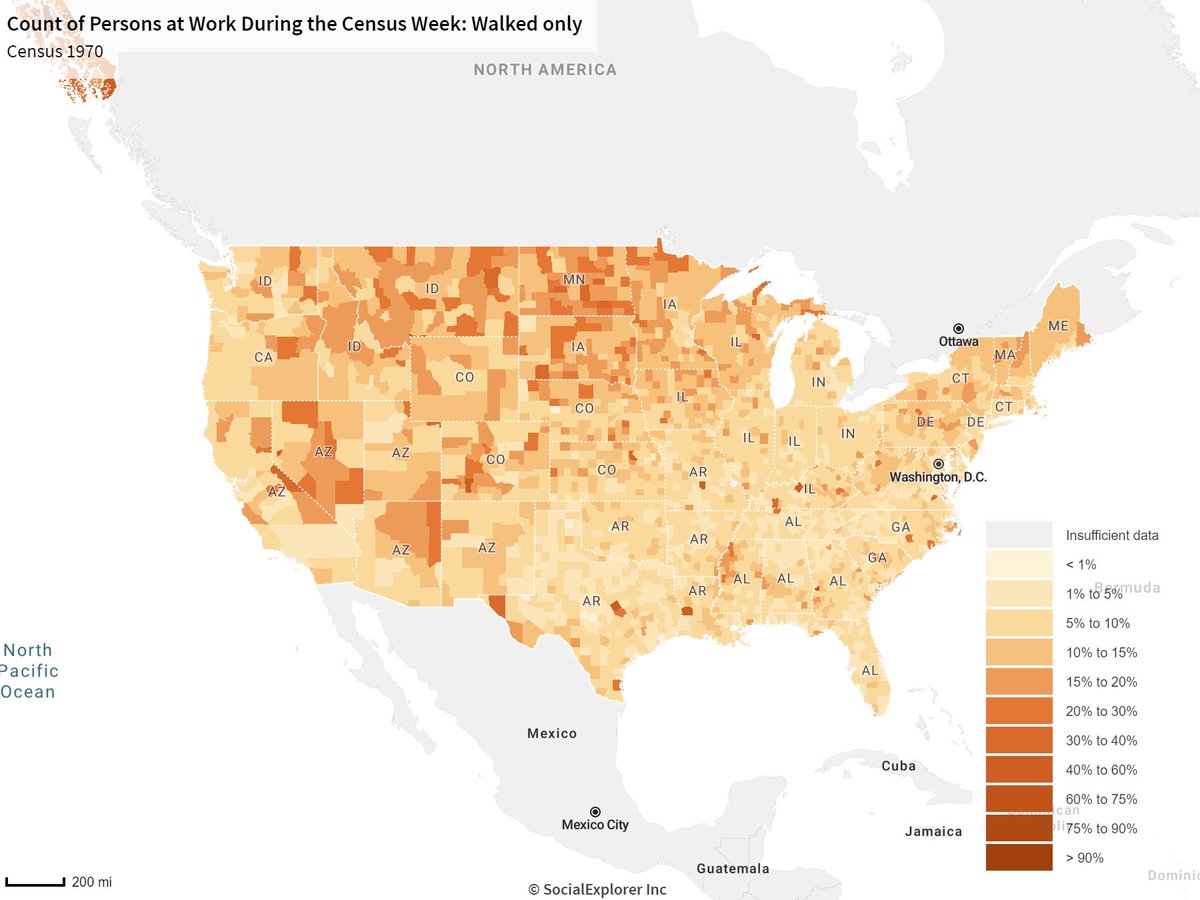
How to get URL link on X (Twitter) App


https://twitter.com/SoundTransit/status/1707100990154149994North of Seattle, Sounder faces capacity constraints that look a bit more like your run of the mill capacity bottlenecks -- single track here, limited passing there, movable bridges, etc.

 There are two plots here. The first has to do with railroad strategy.
There are two plots here. The first has to do with railroad strategy.


https://twitter.com/chrislhayes/status/1598167839692972032Historically, railroads have run non-premium trains on a pretty much ad-hoc basis. They'll have nominal schedules but the train plan can change from day to day, and local managers had immense discretion to do what they wanted w traffic.

https://twitter.com/christofspieler/status/1597797779316711424Generally -- and there's a good deal of railroad-to-railroad variability on exactly how these terms are defined -- there are two basic classes of railroad T&E work:

 American freight RRs exist in this *interesting* space where their efficiency is gonna be critical to a green transport transition, but their network geography, profit incentives, histories, and relatively deregulated context means they're pretty invested in the FF economy
American freight RRs exist in this *interesting* space where their efficiency is gonna be critical to a green transport transition, but their network geography, profit incentives, histories, and relatively deregulated context means they're pretty invested in the FF economy

 @EnglishRail For those of you asking how I made this: I've been working on an R script that takes GTFS data, and painstakingly breaks transit routes into segments with constant service levels (to account for branching/short turns/etc) and then maps them.
@EnglishRail For those of you asking how I made this: I've been working on an R script that takes GTFS data, and painstakingly breaks transit routes into segments with constant service levels (to account for branching/short turns/etc) and then maps them.
https://twitter.com/PennDOTNews/status/1541495374065590274The main features of the new NS plan are...fewer, more reliable trains. That not only means there's likely more mainline capacity to go around, but also just on a very basic level that the capacity modeling done for the new Amtrak svc is...essentially void.


 Sprawl and centralization (i.e. into regional retail centers) killed both, massively cutting walkable trips and increasing VMT
Sprawl and centralization (i.e. into regional retail centers) killed both, massively cutting walkable trips and increasing VMT

 Generally, buses' share of all travel is remarkably flat across travel category; while they carry proportionally fewer trips than subways in all categories, that flat distribution does speak to their remarkably versatile role in NYC's all-day transit system
Generally, buses' share of all travel is remarkably flat across travel category; while they carry proportionally fewer trips than subways in all categories, that flat distribution does speak to their remarkably versatile role in NYC's all-day transit system

https://twitter.com/TheLIRRToday/status/1541055437029654528To get at this point, I decided to face my fears and play around with NYMTC's regional travel survey data. It's a bit old (2010-12ish) but it's still useful to get a sense of how people are use the region's infrastructure for _all_ their trips, not just commutes

https://twitter.com/everytract/status/1514638651816386564What's perhaps most immediately striking about this tract is the checkerboard pattern of land ownership here. The West's terrain-agnostic land grid was one of the great rationalist instruments of settler colonial expansion (it made the commoditization/distribution of land easy)

https://twitter.com/liameoconnell/status/1514087815205826562
 These figures seem to come out of a 2014 study of westward expansion of the Keystone service whose assumptions about track construction are unclear to me. The report text suggests they expected a lot of semi-greenfield work to triple track (on a previously 4-tk corridor)
These figures seem to come out of a 2014 study of westward expansion of the Keystone service whose assumptions about track construction are unclear to me. The report text suggests they expected a lot of semi-greenfield work to triple track (on a previously 4-tk corridor) 


https://twitter.com/vanshnook/status/1495575232421244929Moreover, on top of 'should have been done 10 years ago' items like HBLR/NYCT/PATH fare integration, there are real opportunities to shorten that trip cheaply by fixing this mess of curves in the HBLR ROW, and potentially grade separating (parts of) HBLR in JC

https://twitter.com/the_megalopolis/status/1494840247896748033We absolutely should be redistributing funding at all levels of govt towards high quality, universally accessible social services (like transit) — but that’s generally not the choice cities are making today when they decide to go fare free

 Though we should def take some of these conclusions with a grain of salt -- NTD data isn't always perfectly standardized across time/agency -- this does, in my eyes, put a fine point on the wide divergences in political context and managerial capacity among even US agencies
Though we should def take some of these conclusions with a grain of salt -- NTD data isn't always perfectly standardized across time/agency -- this does, in my eyes, put a fine point on the wide divergences in political context and managerial capacity among even US agencies

 A really interesting idea -- along with the traffic growth potential, it has the capacity to increase urban shippers' access to premium rail service, as truck-rail transload warehouses are a lot less space intensive than intermodal termini
A really interesting idea -- along with the traffic growth potential, it has the capacity to increase urban shippers' access to premium rail service, as truck-rail transload warehouses are a lot less space intensive than intermodal termini

